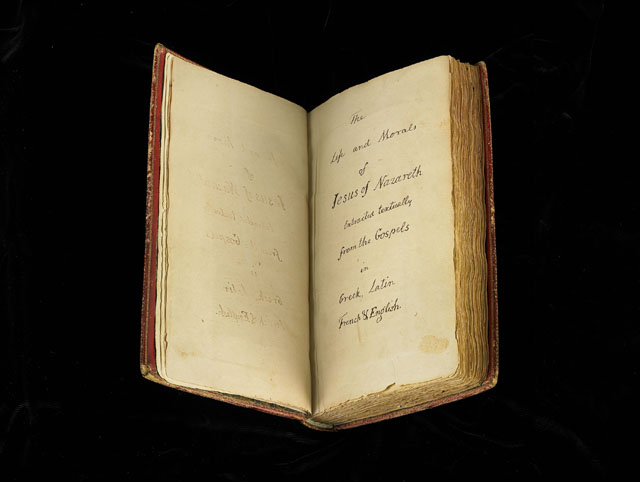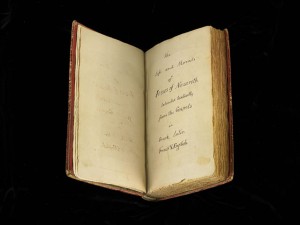WASHINGTON — Smithsonian visitors now have a way to get into the mind of founding father Thomas Jefferson, the nation’s third president.
The National Museum of American History will opened its exhibit of “Jefferson’s Bible, “The Life and Morals of Jesus of Nazareth” on Nov. 11.
“Part of what’s exciting is now is you can, by reading this book, get closer to Jefferson than most people of his time could get,” said Barbara Clark Smith, co-curator of the exhibit.
Jefferson compiled the book in 1820 after years of thought, according to Smith. Due to age and deterioration, Jefferson’s bible had to undergo a year–long conservation process to ensure that it could continue to be on display.
“We realized several years ago that the book was simply too fragile to open anymore,” said Janice Ellis, senior paper conservator at the museum.
More than 90 percent of the pages suffered from physical damage prior to the process. Conservators removed the cover and began to separate the pages. After removing the stubs and adhesive responsible for most of the damage, Ellis cleaned and mended the pages and rebound the book.
Where: Albert H. Small Documents Gallery at the National Museum of American History, 1400 Constitution Ave NW in Washington
How to attend: View the book and its source books on display or explore the book using a Web kiosk
Bible informed Jefferson’s thinking
Jefferson put together the book as a private text made up of excerpts from the Four Gospels of the New Testament. He used portions written in Greek, French, Latin and English with the purpose of chronicling the life of Jesus.
Smith said he purposely focused on Jesus’ life by excluding any reference to his divinity, which was controversial at the time.
“It’s certainly ambitious and audacious what he does, but it’s also extremely respectful. He thinks Jesus’ teachings are the most important for society and for his American new republic.” Smith said.
The text gives a rare insight into Jefferson’s thoughts on religion, which he believed were between an individual and God.
“He did not talk to his contemporaries very much about his beliefs,” Smith said. “His own grandchildren reported to a biographer in the 1850s that when they asked him about his religious beliefs, he wouldn’t tell them,” she said.
The book also gives a glimpse into Jefferson’s thought process about building America, especially when it comes to the separation of church and state.
“What Jefferson truly believed in is by allowing for the separation of church and state, you really allow a flowering of thought and that is really what I think Jefferson was most interested in,” said co-curator Harry Rubenstien.
The museum acquired the text from Jefferson’s great-granddaughter in 1895
after Cyrus Adler discovered its existence after cataloging two source books with passages cut out. Initially, Adler was unable to locate the book.
He finally tracked down Jefferson’s great-granddaughter and bought the book for $400. Up until the 1950s, new congressmen were given copies of the book as a model for good governing.
The book could give visitors glimpse into the internal issues Jefferson faced even at the end of his life.
“You can envision an elderly Thomas Jefferson still dealing with those very central questions that he had in his early life as an adult what should be the moral basis of the new republic,” Rubenstein said. “I think you get that in only a way that museums can achieve.”


